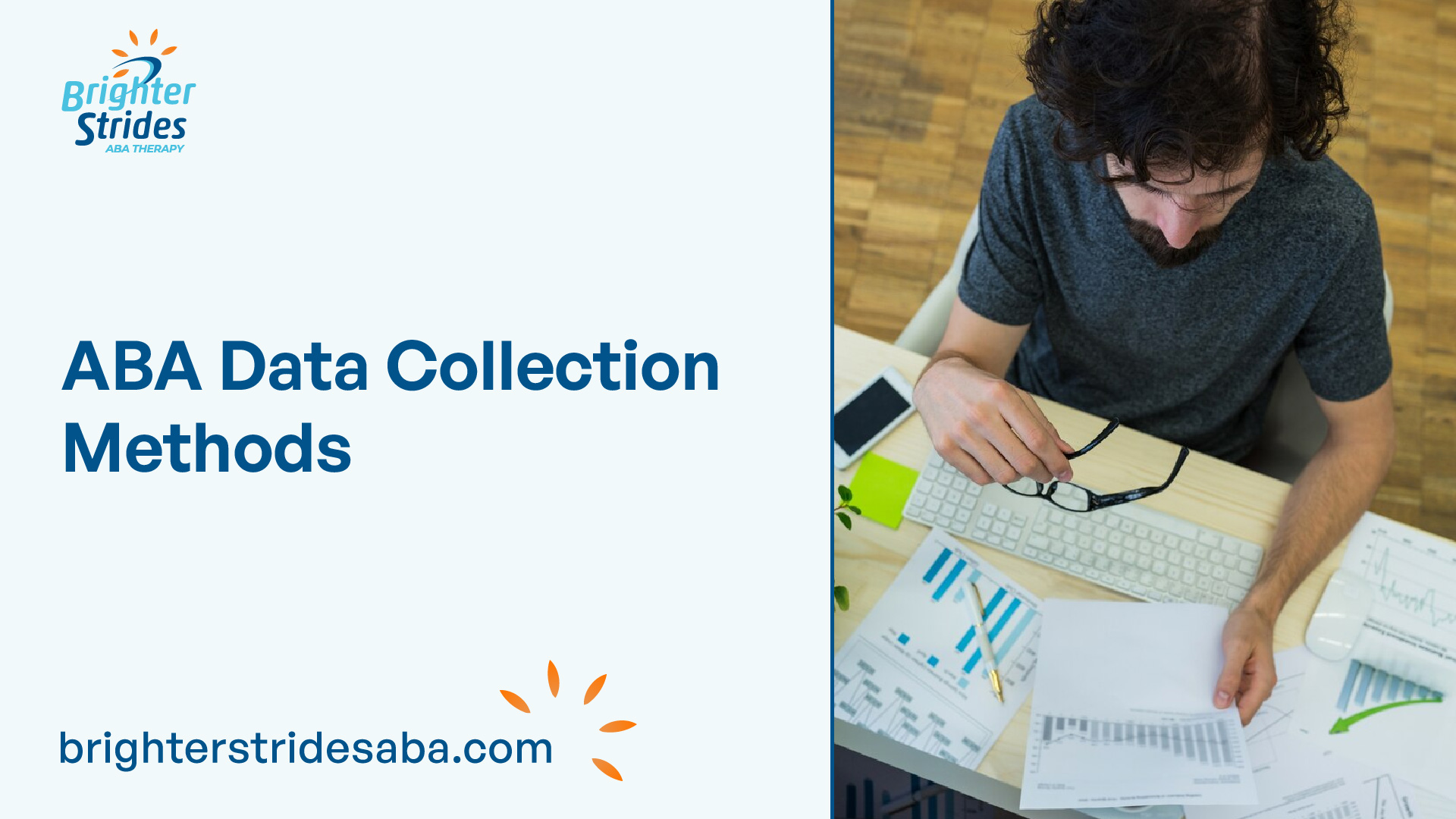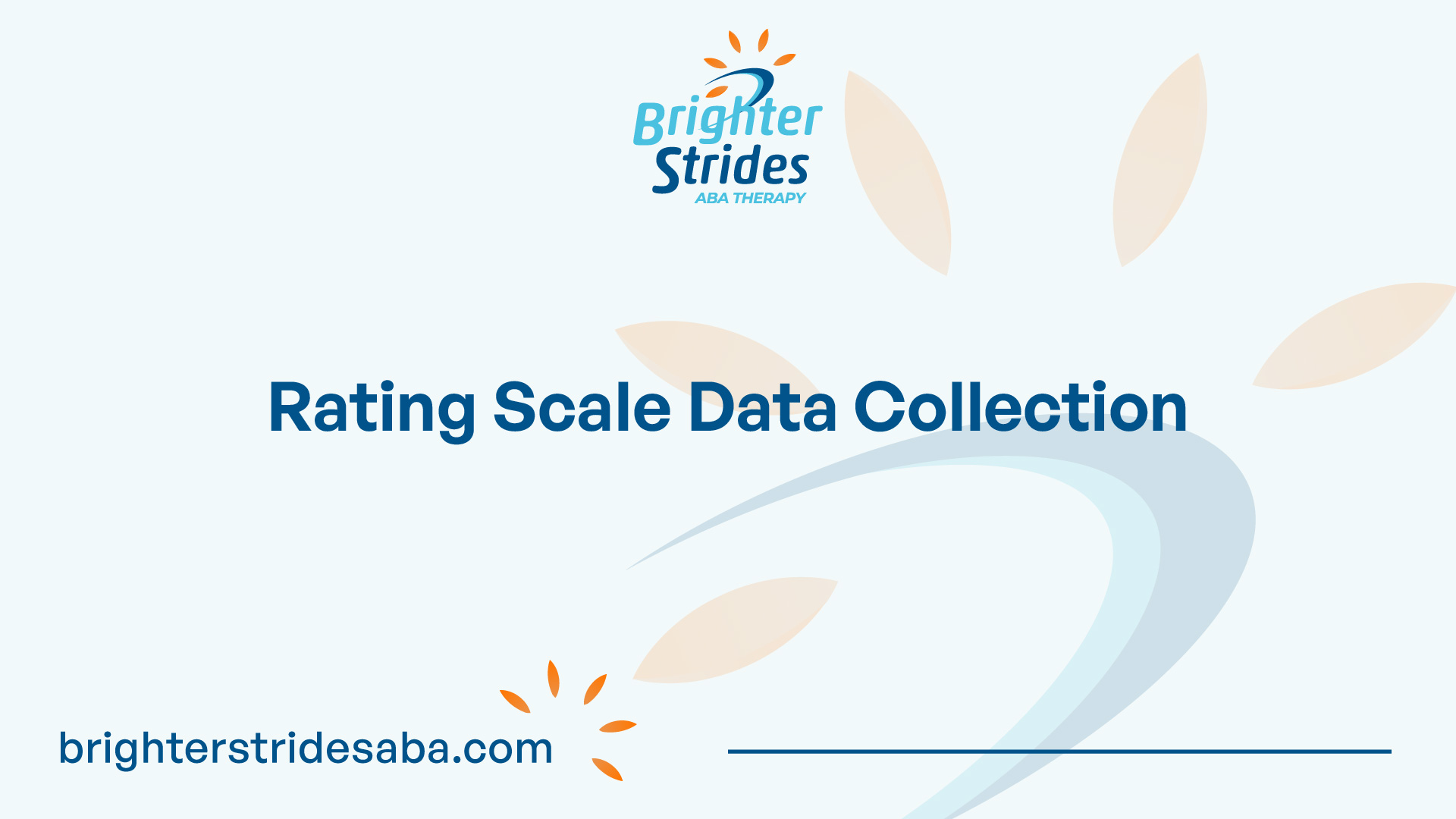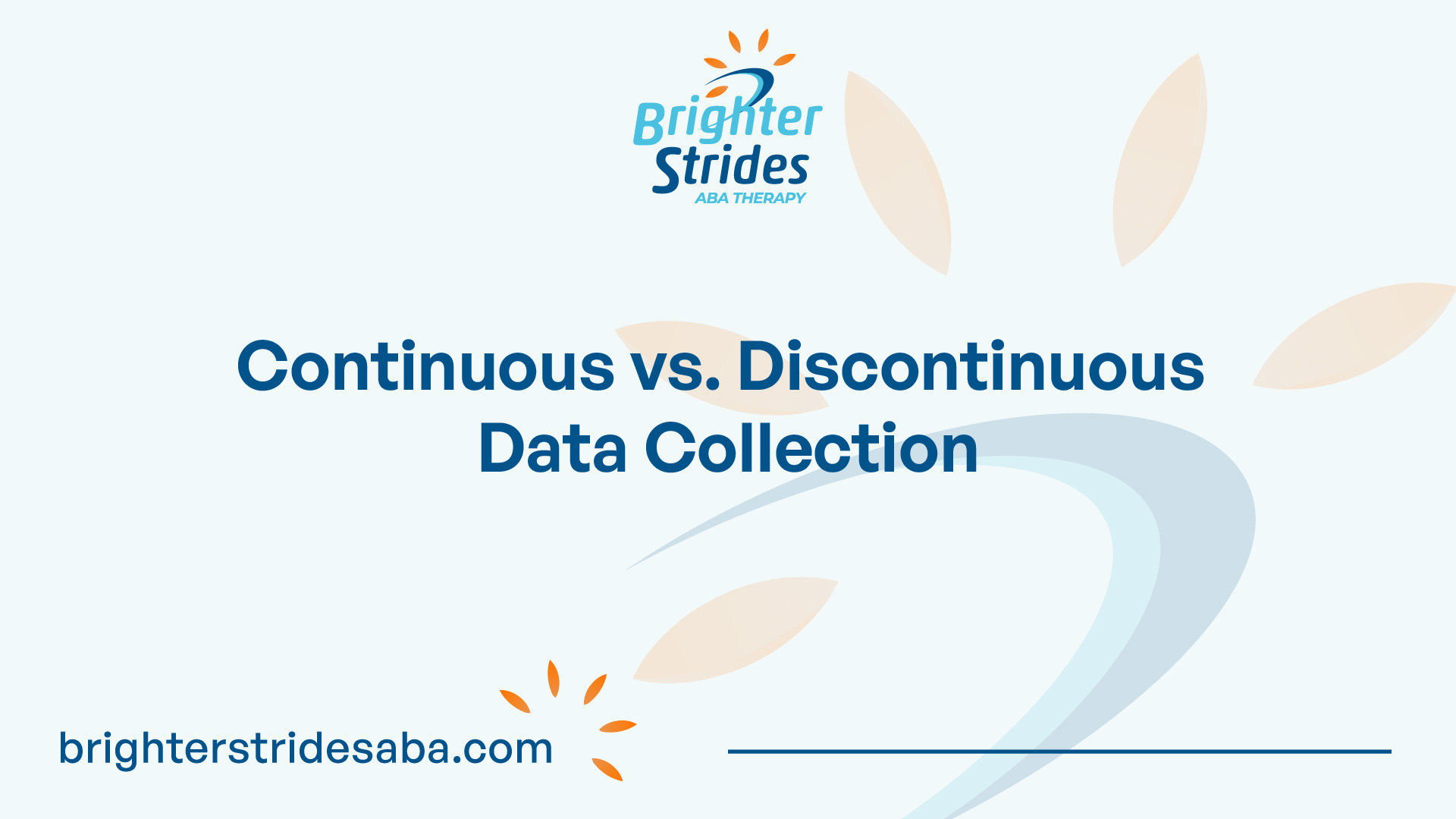
Understanding ABA Data Collection
In the field of Applied Behavior Analysis (ABA), data collection plays a crucial role in assessing behavior change, monitoring progress, and evaluating the effectiveness of interventions. By systematically collecting and analyzing data, behavior analysts can make informed decisions to guide their interventions and ensure the best outcomes for individuals receiving ABA services.
Importance of Data Collection Methods
Data collection methods are essential in ABA to ensure precision in intervention design, evidence-based practice, progress monitoring, intervention adjustments, and accountability and documentation. The data collected provides valuable information about behavior patterns, skill acquisition, and the effectiveness of interventions. This information leads to a better understanding of the individual’s progress and helps behavior analysts make data-driven decisions.
By employing systematic and reliable data collection methods, behavior analysts can track and measure behavior change over time. This allows them to identify trends, patterns, and potential barriers to progress. With this information, they can modify interventions, make more informed decisions, and ensure that the individual is receiving the most effective treatment.
Choosing the right data collection method is crucial in ABA. The method should align with the specific goals of the intervention and support the learning process. It should also allow behavior analysts to effectively engage with learners and provide them with the necessary feedback and support. It is essential to strike a balance between collecting comprehensive data and ensuring that the data collection process does not hinder the student’s progress or become burdensome for the learner.
Different data collection methods may be required based on the goals of the intervention. For example, teaching new social skills may require different data collection methods compared to changing educational behaviors. Behavior analysts should carefully consider the goals of the intervention and select appropriate data collection methods that align with those goals.
To ensure accurate and reliable data collection, it is important to have trained observers who can collect data objectively. These observers may include behavior analysts, members of the intervention team, or other trained professionals who can provide unbiased observations of the targeted behaviors.
In summary, data collection is a fundamental component of ABA practice. It allows behavior analysts to measure behavior change, track progress, and evaluate the effectiveness of interventions. By selecting appropriate data collection methods and ensuring accurate and consistent data collection, behavior analysts can make informed decisions that lead to positive behavior change and improved outcomes for individuals receiving ABA services.
Common ABA Data Collection Methods
When it comes to Applied Behavior Analysis (ABA), data collection is a crucial component in understanding behaviors and developing effective interventions. There are several common data collection methods used in ABA, each serving specific purposes in tracking behaviors and gathering relevant information for interventions.
Task Analysis
Task analysis involves breaking down complex skills or behaviors into smaller, manageable steps. This method allows behavior analysts to assess and track an individual’s progress as they learn and master each step of a task. Task analysis is particularly useful when teaching new skills or assessing skill acquisition over time.
Scatterplot Analysis
Scatterplot analysis is a visual representation of behavior occurrences throughout a specific time period. It helps identify patterns, trends, and potential triggers for behaviors. Behavior analysts and caregivers can use scatterplot analysis to gain insights into when and where behaviors are more likely to occur, enabling them to implement targeted interventions.
Frequency/Event & Rate Recording
Frequency/event and rate recording is a common ABA data collection method that involves counting and recording the number of times a behavior occurs within a specific time frame. This method provides valuable information about the occurrence and severity of a behavior, allowing behavior analysts to determine the best course of action for addressing a specific behavior.
Duration Recording
Duration recording involves measuring the length of time that a specific behavior lasts. This method is particularly useful for behaviors that are too fast or too variable to count using frequency/event and rate recording. Duration recording provides additional insights into behavior patterns and helps behavior analysts understand the duration and intensity of specific behaviors.
Latency Recording
Latency recording focuses on measuring the time it takes for a behavior to occur after a verbal cue or event. This method helps behavior analysts assess the effectiveness of verbal cues in modifying behaviors and understand the impact of specific events on behavior changes. By tracking latency, analysts can identify potential delays in response and determine strategies to prompt promptness.
ABC Data
ABC (Antecedent-Behavior-Consequence) data collection method involves identifying the events that precede a behavior, the behavior itself, and the consequences of that behavior. This method helps behavior analysts understand the triggers and outcomes of behaviors, providing insights into the function of the behavior. By analyzing the ABC data, behavior analysts can formulate effective support plans tailored to the individual’s needs.
By utilizing these common ABA data collection methods, behavior analysts and caregivers can gather essential information about behaviors, identify patterns, and make informed decisions regarding interventions. Each method serves a unique purpose and contributes to a comprehensive understanding of behaviors, facilitating effective behavior management strategies.

Rating Scale Data Collection
In the field of Applied Behavior Analysis (ABA), data collection methods play a crucial role in assessing behavior change and tracking progress. One effective method used in ABA is rating scale data collection. This method involves describing behavior along a continuum and can be particularly useful during play sessions with early learners.
Description and Benefits
Rating scale data collection allows instructors to outline specific goals and objectives for the individual receiving ABA therapy. At the end of each session, the instructor rates the individual’s performance based on predetermined criteria or scales. These ratings are then graphed over time to track progress and identify any patterns or trends [1].
One of the primary benefits of rating scale data collection is its versatility. It can be utilized in various settings and with individuals of different ages and abilities. This flexibility makes it a valuable tool in assessing and tracking behavior change across a wide range of ABA intervention strategies.
By utilizing rating scale data collection, ABA professionals can gain valuable insights into an individual’s progress over time. It allows for the objective measurement of behavior, providing a standardized approach to evaluating performance and identifying areas for improvement. Additionally, rating scale data collection helps in establishing clear goals and objectives, making it easier to communicate progress with other team members and stakeholders.
It’s important to note that rating scale data collection is most effective when used in conjunction with other data collection methods. Combining multiple methods provides a comprehensive view of an individual’s behavior and allows for more accurate analysis and decision-making. ABA professionals may choose to incorporate rating scale data collection alongside methods such as Discrete Trial Training (DTT), Naturalistic Observation, or ABC Data Collection depending on the unique goals of the intervention [2].
To ensure the accuracy and consistency of data collection, it is essential to provide thorough training to all data collectors involved in the ABA research or therapy process. Regular refresher sessions and ongoing professional development opportunities can help maintain high standards in data collection [3]. Additionally, leveraging technology, such as digital data collection tools and specialized software, can enhance accuracy and efficiency in ABA research. Real-time data entry and analysis are facilitated through tools like tablets and software, depending on specific needs and budget [3].
Rating scale data collection is a valuable method within ABA, allowing for the objective measurement and tracking of behavior change. Its versatility and ability to provide standardized assessments make it an effective tool in assessing progress and communicating goals in ABA therapy. By combining rating scale data collection with other methods and leveraging technology, ABA professionals can revolutionize their practice and enhance the effectiveness of their interventions.
Specific Methods in ABA Data Collection
To effectively track progress and outcomes in Applied Behavior Analysis (ABA) therapy, specific data collection methods are employed. Two commonly used methods are probe data collection and trial-by-trial data collection. It is important to ensure the efficacy of the chosen method to support learning and monitor progress accurately.
Probe Data Collection
Probe data collection involves taking yes/no data on the first trial of a program and then proceeding with teaching. This method is beneficial for students who learn quickly and may only need a few exposures to the material. It provides an initial assessment of the learner’s skills, allowing instructors to gauge their understanding before implementing further teaching strategies [1].
However, a potential downside of probe data collection is that instructors might not run as many teaching trials if there is no data to record after the first response. It is important to strike a balance between gathering initial information and providing enough opportunities for learning and practice.
Trial-by-Trial Data Collection
Trial-by-trial data collection entails recording data for each trial run, usually at least 10, to calculate the percentage of correct responses. This method provides more objective information than probe data collection and encourages instructors to run at least 10 trials. By graphing the percentage of correct responses over time, changes in performance can be tracked, allowing for a more detailed analysis of progress [1].
Compared to probe data collection, trial-by-trial data collection offers a more comprehensive view of the learner’s progress. It allows for the identification of trends and patterns in performance, helping instructors to make informed decisions about the effectiveness of teaching strategies and interventions.
Ensuring Method Efficacy
When selecting a data collection method, it is crucial for behavior analysts to ensure that the chosen method supports the learner’s progress rather than hindering it. The selected method should aid learning, allow for monitoring and change viewing, and enable instructors to engage with learners effectively [1].
It is important to consider factors such as the learner’s individual needs, the complexity of the skill being taught, and the frequency and duration of teaching sessions. By carefully evaluating the efficacy of the chosen data collection method, behavior analysts can make informed decisions and optimize the effectiveness of the ABA therapy process.
In addition to probe and trial-by-trial data collection, there are various other data collection methods available in ABA. Each method serves a specific purpose and provides valuable information for behavior analysts to guide interventions and measure progress. By employing appropriate data collection methods, behavior analysts can revolutionize their practice and enhance the effectiveness of ABA therapy.

Continuous vs. Discontinuous Data Collection
When it comes to data collection in Applied Behavior Analysis (ABA), professionals must choose between continuous and discontinuous methods to effectively measure behavior and assess the effectiveness of interventions. Each approach has its own advantages and considerations.
Choosing the Right Approach
The decision to use continuous or discontinuous data collection methods depends on the specific goals and requirements of the assessment or intervention. Continuous data collection methods, such as frequency, rate, duration, and latency recording, provide accurate and detailed information that is sensitive to behavior change [4]. These methods involve recording behavior throughout the entire observation period, capturing every instance of the behavior of interest. Continuous methods are particularly useful when precise measurement of behavior is essential.
On the other hand, discontinuous data collection methods, such as partial interval, whole interval, and momentary time sampling, offer estimates of behavior occurrence and are often employed in busy environments where staff may not be able to attend to the learner’s behavior throughout the entire session [4]. Discontinuous methods involve sampling behavior at specific intervals or moments, providing a snapshot of behavior during those time points. These methods are efficient and can be useful when continuous observation is not feasible.
It is important to consider the trade-offs between accuracy and efficiency when choosing between continuous and discontinuous data collection methods. Continuous methods provide more comprehensive and detailed data, making them suitable for assessing progress and identifying behavior patterns. Discontinuous methods, on the other hand, are more efficient and easier to use, making them practical for busy environments where constant observation is challenging [5].
Continuous Data Methods
Continuous data collection methods involve measuring behavior throughout the entire observation period, allowing for a detailed analysis. Here are some commonly used continuous data collection methods:
- Frequency Recording: This method involves counting the number of times a behavior occurs within a given time frame. It provides information about the occurrence of a behavior.
- Rate Recording: Rate recording measures the frequency of behavior over a specific unit of time, such as per minute or per hour. It is useful for comparing behavior across different observation periods.
- Duration Recording: Duration recording tracks the length of time that a behavior persists. It provides information about the duration of behavior episodes.
- Latency Recording: Latency recording measures the time between a specific event or cue and the initiation of a behavior. It helps assess the speed of response.
Discontinuous Data Methods
Discontinuous data collection methods involve sampling behavior at specific intervals or moments. Here are some commonly used discontinuous data collection methods:
- Partial Interval Recording: Partial interval recording involves recording whether the behavior occurs at any point during a specific interval. It provides an estimate of behavior occurrence.
- Whole Interval Recording: Whole interval recording involves recording whether the behavior persists for the entire duration of a specific interval. It provides an estimate of behavior engagement.
- Momentary Time Sampling: Momentary time sampling involves recording whether the behavior is occurring at the end of a specific interval. It provides an estimate of behavior presence at that moment.
By selecting the appropriate data collection method, ABA professionals can gather accurate and meaningful data to guide decision-making and monitor behavior change. The choice between continuous and discontinuous methods should be based on the specific goals, resources, and constraints of the assessment or intervention. Additionally, it is important to consider the unique needs of each individual and to continually evaluate the efficacy of the chosen data collection approach.
Enhancing ABA Data Collection
To revolutionize the field of Applied Behavior Analysis (ABA), it is important to continuously explore and adopt new strategies for data collection. Enhancing the data collection process can lead to improved accuracy, efficiency, and overall effectiveness. In this section, we will explore three key factors in enhancing ABA data collection: leveraging technology, ethical considerations, and training data collectors.
Leveraging Technology
Leveraging technology is a powerful way to enhance ABA data collection. Digital data collection tools and specialized software can significantly improve accuracy and efficiency in research studies and interventions. With the use of tablets or other digital devices, real-time data entry becomes possible, eliminating the need for manual transcriptions and reducing the chances of errors. Additionally, specialized software tailored to the needs and budget of ABA professionals can facilitate real-time data analysis, providing immediate insights into behavior patterns and progress.
By automating data collection and analysis, technology helps streamline the process, saving valuable time and resources. It also enables the generation of descriptive statistics and visual representations, such as graphs and charts, which can aid in data interpretation and decision-making. To explore different technology options for ABA data collection, consider referring to aba professional development resources and consulting with experts in the field.
Ethical Considerations
Ethical considerations play a critical role in ABA data collection. Researchers and practitioners must prioritize the protection of participants’ rights and privacy. Confidentiality should be maintained throughout the data collection process, ensuring that personal information is safeguarded. Researchers must obtain informed consent from participants or their legal guardians, ensuring that participation is voluntary and based on a clear understanding of the study’s purpose and procedures.
Compliance with relevant regulations, such as the Health Insurance Portability and Accountability Act (HIPAA), is crucial to ensure data security and privacy. HIPAA provides guidelines for the protection of individually identifiable health information, emphasizing the importance of safeguarding sensitive data. Researchers should familiarize themselves with the regulations and implement appropriate measures to comply with them.
To learn more about ethical considerations in ABA data collection and research, refer to aba therapy models and consult relevant professional guidelines and ethical standards.
Training Data Collectors
Thoroughly training data collectors is essential to maintain consistency and reliability in ABA data collection. Data collectors should receive comprehensive training on the specific data collection methods being used, ensuring they understand the procedures and can execute them accurately. Training should cover topics such as observing and recording behavior, using data collection tools, and maintaining objectivity and reliability.
Regular refresher sessions can help reinforce knowledge and skills, enabling data collectors to stay up-to-date with best practices in data collection. Ongoing training opportunities, such as workshops and professional development programs, can further enhance the expertise of data collectors and promote continuous improvement in data collection techniques.
Collaboration with experienced professionals and supervisors can provide valuable guidance and feedback to data collectors, ensuring that data collection remains consistent and aligned with the study’s objectives. By investing in the training and development of data collectors, ABA practitioners can enhance the quality and reliability of the data collected.
In summary, enhancing ABA data collection involves leveraging technology, considering ethical implications, and providing comprehensive training to data collectors. By incorporating technological advancements, adhering to ethical guidelines, and investing in professional development, the field of ABA can continue to advance its data collection methods and, consequently, improve the effectiveness of interventions and research studies.

 We've just released an article!
Check out our blog!
We've just released an article!
Check out our blog!



